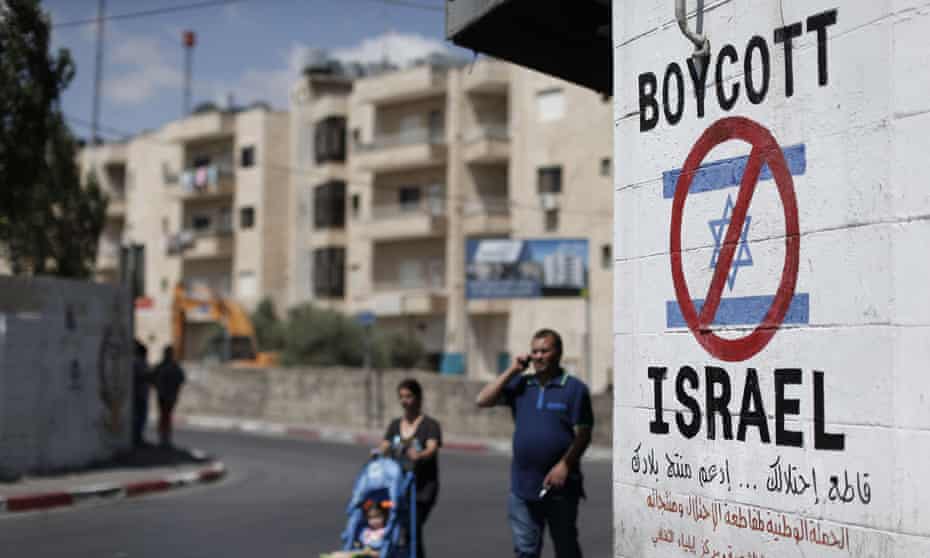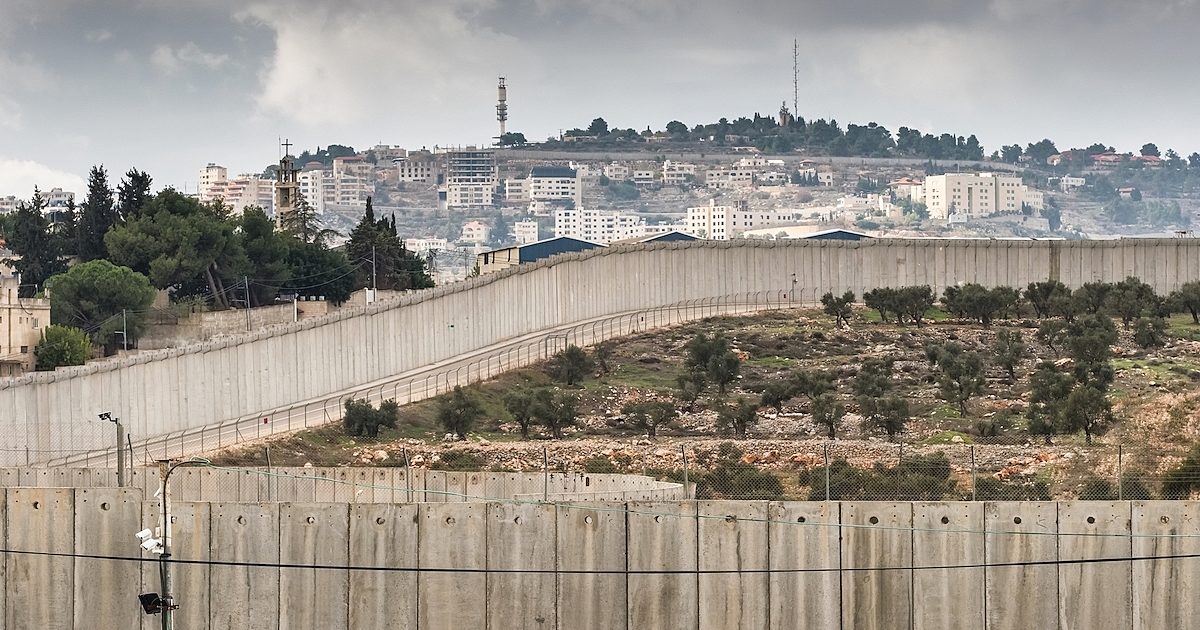Originally published by Ma’an News Agency on September 6, 2014.
 BETHLEHEM (Ma’an) — Since the beginning of the Israeli assault on Gaza, a flurry of popular campaigns have emerged across the West Bank calling for the boycott of Israeli products. Many markets have de-shelved Israeli goods and replaced them with local equivalents, while others have continued to stock them but highlighted Palestinian goods with cheery national flags and more prominent places on the shelf.
BETHLEHEM (Ma’an) — Since the beginning of the Israeli assault on Gaza, a flurry of popular campaigns have emerged across the West Bank calling for the boycott of Israeli products. Many markets have de-shelved Israeli goods and replaced them with local equivalents, while others have continued to stock them but highlighted Palestinian goods with cheery national flags and more prominent places on the shelf.
Nearly a decade after the launch of the global campaign to boycott Israel, the last two months have finally witnessed a massive outpouring of enthusiasm to stop “supporting your occupier” across the West Bank.
Despite the celebratory posters and rearranged shelves, however, the sudden rise of the boycott movement has raised wider questions about how effective a potential boycott could actually be inside Israeli-occupied territory.
In the West Bank, it is almost impossible to find a single grocery store not stocked primarily with Israeli goods because of the 1993 Oslo Agreements that gave Israel almost total control and unfettered access to the Palestinian economy while severely limiting Palestinian imports and exports otherwise.
With the boycott movement showing no signs of slowing, however, and a handful of Israeli companies reporting increasing economic losses in its wake, the campaign is forcing many to ask a question long dismissed: is it possible to boycott Israel even while under occupation?

Revival of resistance consciousness
“In the last few years, many Palestinians thought West Bankers had become domesticated and no longer able to resist,” Tariq Dana, a policy adviser for the Palestinian Al-Shabaka think tank told Ma’an. But the boycott campaign is an “indication and important sign of the revival of the Palestinian consciousness of resistance in the West Bank,” he said.
During an interview in the southern West Bank town of Beit Sahour at the smoky Singer Cafe, a local political hangout covered in portraits of leftist heroes like George Habash and Che Guevara, Dana told Ma’an that something had changed in the West Bank mentality as a result of the recent Israeli offensive on Gaza that left over 2,000 dead.
Dana highlighted that the boycott campaign had “emerged spontaneously” across the West Bank, suggesting that the disorganized nature had allowed it to avoid obstacles that a full-scale intifada could have faced.
“There were many analyses on the potential of a Third Intifada in the West Bank, but there are a lot of restrictions from Israel and the Palestinian Authority, as well as the absence of political structures, parties, civil society, and mass-based political organizations to direct anger in the right direction,” he said.
“But boycott is another tool of resistance,” he continued, “And any intifada is a form of revolution.”Dana said that despite the obstacles the Oslo Accords put in the way of Palestinian self-sufficiency — including the dismantling of the institutions that had promoted the boycott during the First Intifada — boycott is very much a possibility.
“Boycott needs to become an integral culture in Palestinian society and it will require changing our lifestyle … people need to boycott Israeli products whether they are better or not because they harm us and they support the occupation.”
Dana stressed the need to “ensure that the campaign was sustainable and institutionalized, not only groups here and there but through organizations, committees, and political parties.”
Dana pointed to the experience of the town of Beit Sahour during the First Intifada, emphasizing how the village produced “simple forms of self-sufficiency” to reduce dependency on Israeli products.
“Beit Sahour could fully rely on its productive base to produce simple products and they invented so-called victory gardens — common gardens in neighborhoods that people share. It was a simple model but an effective one.”
“Beit Sahour for years could fully boycott Israeli products, and you couldn’t find any Israeli products in local markets,” he added. “The First Intifada was much more than people throwing stones … it included a change of lifestyle.”
Indeed, the little village of Beit Sahour near Bethlehem is famed for its innovative use of boycott campaigns, including the 1989 rebellion when residents stopped paying taxes under the slogan “No Taxation Without Representation.”
Although the Israeli military responded with a 42-day siege of the town, the rebellion — along with an Israeli manhunt for 18 cows that locals used to avoid purchasing Israeli milk — made Beit Sahour a symbol of Palestinian desire for freedom.
‘We can’t just cut our houses off the grid’
Current mayor of Beit Sahour Hani al-Hayek, however, is doubtful that strategies once utilized to such effect in the town are still relevant.
Although the mayor’s office is just a short walk down an alley from Cafe Singer in Beit Sahour’s tranquil Old City, the municipality feels like a world away, with locals filing in and out of offices for official business beneath walls adorned with posters promoting tourism.”
Almost $4 billion a year goes to Israel through products we buy, but most of this is electricity, water, and fuel,” al-Hayek told Ma’an. “What are we going to do? We can’t just cut our houses off from the grid.”
Although al-Hayek acknowledged that the boycott movement had scored successes in recent weeks, he stressed that salvation could not come through the boycott of “yogurt and juice” due to the structural economic issues facing Palestinians.
“Boycott cannot be a few things here and there, it has to involve broad support of Palestinian products.”
Al-Hayek stressed the need for an “organized, systematic planned program to push the Palestinian market forward,” arguing that “we have to support competition, and not just for two weeks. The boycott cannot just be two weeks because of Gaza.”
He said that the municipality had set up an exhibition in August to familiarize local residents with Palestinian products, with the hope that this would encourage more people to buy local.
The push to support the Palestinian economy, however, faces major obstacles that neither start nor end with public awareness.
Beside Israeli control over all border crossings, Israel regulations on Palestinian land limit the ability of Palestinian entrepreneurs to expand productive enterprises.
A whopping 61 percent of West Bank land is in Area C under full Israeli control, and tens of thousands of Palestinians — a large percentage of those farmers — have been evicted for the construction of Jewish settlements. Constructing enterprises in these areas is a Kafkaesque feat filled with permits, potential demolitions, and army harassment, leading many Palestinians to instead resort to cooperation with the occupation through the import and distribution of Israeli products.
The World Bank estimated in October that Israeli control over Area C alone — not counting the wide variety of restrictions in the rest of the West Bank — cost the economy an estimated $3.4 billion a year.
Even if Palestinians attempt to support local industry, Israeli restrictions on all aspects of Palestinian life institutionalized by the Oslo Accords mean that the structural impediments to realizing a full West Bank boycott of Israeli goods may be insurmountable.Critics of the campaign thus charge that the boycott can only hope to be symbolic at best, offering West Bankers little real hope.
 An individual moral act
An individual moral act
Not everyone, however, sees the potentially symbolic nature of boycott as an impediment.”If you want to talk about symbols, this entire political structure is a symbol that we have virtually zero effect on,” Palestinian artist Omarivs Ioseph Filivs Dinæ aka Omar Joseph Nasser-Khoury told Ma’an in a Skype interview.
“But if we have effects over these symbols at least, these effects have economic, international and symbolic reverberations across the globe. This is enough. This is a starting point,” he added, denouncing the “defeatist narrative” that mocked the boycott movement without presenting clear alternatives.
In early August, Nasser-Khoury launched a campaign calling for Palestinian artists to respect the cultural boycott of Israel that received more than 200 signatures.
Entitled “A Reiteration — An Escalation,” the campaign calls for a boycott of “Zionist/Israeli platforms and their apologists,” stressing that Palestinians who work with them are “directly complicit … in oppression, murder, dispossession and ethnic cleansing.”
It also calls upon Palestinian creatives “to confront and rethink these oppressive realities and dismantle them.”Boycott in “the creative industry is much easier than trade,” Nasser-Khoury admitted, “as you don’t need to engage with official and bureaucratic government apparatuses as creatives. We are people who have privilege, means, creativity, and tools to go about setting an example.”
Nasser-Khoury pointed to historic examples of cultural resistance in Palestine, arguing that the “situation has not changed” and neither should the response.”
Before 1993, before the PLO, all of Palestine was occupied, all creative space and dissident art was under extreme duress and censorship. People risked prison and being killed (for their art) … You couldn’t even put the colors of the flag together in any kind of scribble.”
“We are still under occupation, we are still being killed, oppressed, slaughtered, and living under apartheid. Just because there is a PNA government it doesn’t mean this has changed. The same goes for ’48 Palestine.”
Acknowledging that BDS won’t “disintegrate Israel and Zionism overnight,” Nasser-Khoury argued: “At least we are saying that we’re here and we understand. We don’t approve of the PA, or Israel, or Zionism, or the PLO, or whoever is complicit with them, and we have a tool that we can fight with. It’s a form of resistance that must never be undermined.”
For Nasser-Khoury, even if the economic boycott did not manage to create an immediate change on the ground, it was an important way for Palestinians to affirm their very existence and their rejection of Israeli colonialism.”It’s about disengaging, saying: I refuse to engage with occupation.”
“(Boycott) is me acknowledging that by morally giving you the high ground by proving the normality of the situation, I am approving of what you’re doing. And by not taking part in this we are saying: no, this is not a normal situation.”